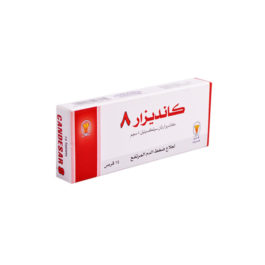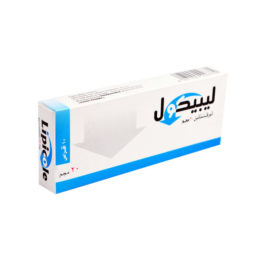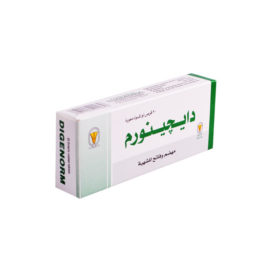Description
Pharmaceutical form
Omez capsules 10 mg: hard gelatin capsules with an opaque bluish green cap and white body. Each capsule contains omeprazole 10 mg as enteric coated pellets.
Omez capsules 20 mg: hard gelatin capsules with an opaque blue cap and opaque turquoise body. Each capsule contains omeprazole 20 mg as enteric coated pellets.
Omez capsules 40 mg: hard gelatin capsules with an opaque blue body and light blue cap. Each capsule contains omeprazole 40 mg as enteric coated pellets.
Therapeutic indications
Treatment of oesophageal reflux disease. In reflux oesophagitis the majority of patients are healed after 4 weeks. Symptom relief is rapid.
Treatment of duodenal and benign gastric ulcers including those complicating NSAID therapy.
Relief of associated dyspeptic symptoms.
Helicobacter pylori eradication: Omeprazole should be used in combination with antibiotics for eradication of Helicobacter pylori (Hp) in peptic ulcer disease.
Prophylaxis of acid aspiration.
Zollinger-Ellison syndrome.
For 10 and 20mg Capsules only:
Relief of reflux-like symptoms (e.g. heartburn) and/or ulcer-like symptoms (e.g. epigastric pain) associated with acid-related dyspepsia.
Treatment and prophylaxis of NSAID-associated benign gastric ulcers, duodenal ulcers and gastroduodenal erosions in patients with a previous history of gastroduodenal lesions who require continued NSAID treatment.
Children over 1 year of age and ≥10 kg: Reflux oesophagitis. Symptomatic treatment of heartburn and acid regurgitation in gastroesophageal reflux disease
Posology and method of administration
Omez capsules are recommended to be given in the morning and swallowed whole with half a glass of water. The capsules should not be chewed or crushed.
For patients with swallowing difficulties
The capsule can be opened and the contents swallowed directly with half a glass of water or after mixing the contents in a slightly acidic fluid e.g. fruit juice or applesauce, or in noncarbonated water. The dispersion should be taken immediately (or within 30 minutes). Always stir just before drinking. Rinse it down with half a glass of water.
Alternatively patients can suck the capsule and swallow the pellets with half a glass of water. Ingest without chewing the enteric-coated pellets.
Duodenal ulcer
The recommended dosage in patients with an active duodenal ulcer is Omez 20 mg once daily. Symptom resolution is rapid and in most patients healing occurs within 2 weeks. For those patients who may not be fully healed after the initial course, healing usually occurs during a further 2 week treatment period.
In patients with poorly responsive duodenal ulcer Omez 40 mg once daily is recommended and healing is usually achieved within 4 weeks.
For the prevention of relapse in patients with duodenal ulcer disease the recommended dose is Omez 10 mg once daily. If needed the dose can be increased to Omez 20 – 40 mg once daily.
Gastric ulcer
The recommended dosage is Omez 20 mg once daily. Symptom resolution is rapid and in most patients healing occurs within 4 weeks. For those patients who may not be fully healed after the initial course, healing usually occurs during a further 4 weeks’ treatment period.
In patients with poorly responsive gastric ulcer Omez 40 mg once daily is recommended and healing is usually achieved within 8 weeks.
For the prevention of relapse in patients with poorly responsive gastric ulcer the recommended dose is Omez 20 mg once daily. If needed the dose can be increased to Omez 40 mg once daily.
NSAID associated gastric ulcers, duodenal ulcers or gastroduodenal erosions in patients with or without continued NSAID treatment
The recommended dosage of Omez is 20 mg once daily. Symptom resolution is rapid and in most patients healing occurs within 4 weeks. For those patients who may not be fully healed after the initial course, healing usually occurs during a further 4 weeks treatment period. For the prevention of NSAID associated gastric ulcers, duodenal ulcers, gastroduodenal erosions and dyspeptic symptoms the recommended dosage of Omez is 20 mg once daily.
Helicobacter pylori (Hp) eradication regimens in peptic ulcer disease
Triple therapy regimens:
Omez 20 mg, amoxicillin 1gm and clarithromycin 500 mg, all twice aday for one week
Or
Omez 20 mg, metronidazole 400 mg (or tinidazole 500 mg), and clarithromycin 250 mg all twice aday for one week
Or
Omez 40 mg once daily with amoxicillin 500 mg and metronidazole 400 mg both three times aday for one week.
Dual therapy regimens:
Omez 40-80 mg daily with amoxicillin 1.5 gm daily in divided doses for two weeks. In clinical studies daily doses of 1.5-3 gm of amoxicillin have been used
Or
Omez 40 mg once daily and clarithromycin 500 mg three times aday for two weeks.
In each regimen if the patient is still Hp positive, therapy may be repeated.
Reflux oesophagitis
The recommended dosage is Omez 20 mg once daily. Symptom resolution is rapid and in patients healing occurs within 4 weeks. For those patients who may not be fully healed after the initial course, healing usually occurs during a further 4 weeks’ treatment period. In patients with severe reflux oesophagitis Omez 40 mg once daily is recommended and healing is usually achieved within 8 weeks.
For the long-term management of patients with healed reflux oesophagitis the recommended dose is Omez 10 mg once daily. If needed the dose can be increased to Omez 20-40 mg once daily.
Symptomatic gastro-oesophageal reflux disease
The recommended dosage is Omez 20 mg daily. Symptom relief is rapid. Patients may
respond adequately to 10 mg daily, and therefore individual dose adjustment should be considered.
If symptom control has not been achieved after 4 weeks treatment with Omez 20 mg daily, further investigation is recommended.
Acid related dyspepsia
In the relief of symptoms in patients with epigastric pain/discomfort with or without heartburn the recommended dosage is Omez 20 mg once daily. Patients may respond adequately to 10 mg daily and therefore this dose could be considered as a starting dose. If symptom control has not been achieved after 4 weeks treatment with Omez 20 mg daily, further investigation is recommended.
Zollinger-Ellison syndrome
In patients with Zollinger-Ellison syndrome the dosage should be individually adjusted and treatment continued as long as is clinically indicated. The recommended initial dosage is Omez 60 mg daily. All patients with severe disease and inadequate response to other therapies have been effectively controlled and more than 90% of the patients maintained on doses of Omez 20-120 mg daily. When doses exceed Omez 80 mg daily, the dose should be divided and given twice daily.
Impaired renal function
Dose adjustment is not needed in patients with impaired renal function.
Impaired hepatic function
As bioavailability and plasma half-life of omeprazole are increased in patients with impaired hepatic function a daily dose of 10-20 mg may be sufficient.
Elderly
Dose adjustment is not needed in the elderly.
Children
There is only limited experience of treatment in children.
Contraindications
Known hypersensitivity to omeprazole.
Omeprazole like other PPls should not be administered with atazanavir.
Special warnings and special precautions for use
Decreased gastric acidity due to any means, including proton pump inhibitors, increases gastric counts of bacteria normally present in the gastrointestinal tract. Treatment with acid-reducing drugs may lead to a slightly increased risk of gastrointestinal infections such as Salmonella and Campylobacter.
Some children with chronic illnesses may require long-term treatment although it is not recommended.
Bone fractures: Several published observational studies suggest that proton pump inhibitor (PPI) therapy may be associated with an increased risk for osteoporosis-related fractures of the hip, wrist, or spin. The risk of fracture was increased in patients who received high dose, defined as multiple daily doses, and long-term PPI therapy (a year or longer). Patients should use the lowest dose and shortest duration of PPI therapy appropriate to the condition being treated. Patients at risk for osteoporosis-related fractures should be managed according to the established treatment guidelines.
• Prescription proton pump inhibitor (PPI) drugs may cause low serum magnesium levels (hypomagnesemia) if taken for prolonged periods of time (in most cases, longer than one year), magnesium supplementation alone did not improve low serum magnesium levels and the PPI had to be discontinued.
• Low serum magnesium levels can result in serious adverse events including muscle spasm (tetany), irregular heartbeat (arrhythmias), and convulsions (seizures); however, patients do not always have these symptoms. Treatment of hypomagnesemia generally requires magnesium supplements. Treatment in patients taking a PPI and who have hypomagnesemia may also require stopping the PPI.
Interactions with other medicinal products and other forms of interaction Effects of omeprazole on the pharmacokinetics of other drugs
The following combinations with Omez should be avoided: ketoconazole and itraconazole. Omeprazole might influence the absorption of other drugs due to its effect on the gastric pH.
The dissolution of ketoconazole tablets in the stomach is adversely affected if the pH of the gastric juice increases as a result of drug treatment (antacids, secretion-inhibiting agents, sucralfate). This leads to ineffective plasma concentrations of ketoconazole. During concomitant administration of omeprazole and itraconazole the plasma concentration and AUC of itraconazole are reduced by approximately 65 %, probably as a result of poorer absorption, which is dependent on pH.
Omeprazole inhibits the enzyme CYP2C19 and can therefore cause increased plasma
absorption, which is dependent on Omeprazole inhibits the enzyme CYP2C19 and can therefore cause increased plasma levels of other drugs that are metabolized by this enzyme, e.g. diazepam, phenytoin, warfarin (R-warfarin, the less active form). Monitoring is recommended during initiation or withdrawal of omeprazole in patients being treated with phenytoin, warfarin or other vitamin K-antagonists.
Omeprazole (40 mg. daily) increased the Cmax and AUC of voriconazole (CYP2C19 substrate) by 15% and 41 % respectively.
During concomitant administration of clarithromycin or erythromycin and omeprazole the plasma concentrations of omeprazole were increased. The plasma concentrations of omeprazole are not influenced during concomitant administration with amoxicillin or metronidazole.
Co-administration of omeprazole (40 mg once daily) with atazanavir 300 mg/ritonavir 100 mg to healthy volunteers resulted in a substantial reduction in atazanavir exposure (approximately 75% decrease in AUC, Cmax and Cmin). Increasing the atazanavir dose to 400 mg did not compensate for the impact of omeprazole on atazanavir exposure. PPls including omeprazole should not be co-administered with atazanavir.
Concomitant administration of omeprazole and tacrolimus may result in increased serum concentration of tacrolimus. Monitoring of the tacrolimus plasma concentration is recommended when omeprazole treatment is initiated or ended.
Effects of other drugs on the pharmacokinetics of omeprazole
Drugs that inhibit the enzymes CYP2C19 or CYP3A4 (HIV protease inhibitors, ketoconazole, itraconazole, etc.) can cause increased plasma concentrations of omeprazole. Voriconazole increases the AUCτ of omeprazole by 280 %. In cases of concomitant treatment an adjustment of the omeprazole dose should be considered for patients with considerable impaired hepatic function and in cases of long-term treatment. No interactions between omeprazole and antacids, theophylline, caffeine, quinidine, lidocaine, propranolol, metoprolol or ethanol have been detected.
Pregnancy and lactation
Pregnancy: Well-conducted epidemiological studies indicate no adverse effects of omeprazole on pregnancy or on the health of the fetus/newborn child. Omeprazole can be used during pregnancy.
Lactation:Omeprazole is excreted in breast milk. Influence, if any, on the child is unknown.
Effects on ability to drive and use machines
Omez is not likely to affect the ability to drive or use machines.
Undesirable effects
Omez is well tolerated and adverse reactions have generally been mild and reversible. The following have been reported as adverse events in clinical trials or reported from routine use, but in many cases a relationship to treatment with omeprazole has not been established.
The following definitions of frequencies are used:
Common
> ≥1/100
Uncommon
> ≥1/1000 and < 1/100
Rare
< <1/1000
Common
Central and peripheral nervous system
Headache
gastrointestinal
Diarrhoea, constipation, abdominal pain, nausea/vomiting and flatulence
Uncommon
Central and peripheral nervous system
Dizziness, paraesthesia, light headedness, feeling faint, somnolence, insomnia and vertigo
Hepatic
Increased liver enzyms
Skin
Rash, dermatitis and/or pruritus, urticaria
Other
Malaise
Rare
Central and peripheral nervous system
Reversible mental confusion, agitation, aggression, depression and hallucinations, predominantly in severely ill patients
Endocrine
Gynaecomastia
Gastrointestinal
Dry mouth, stomatitis and gastrointestinal candidiasis
Haematological
Leukopenia, thrombocytopenia, agranulocytosis and pancytopenia
Hepatic
Encephalopathy in patients with preexisting severe liver disease; hepatitis with or without jaundice, hepatic failure
Musculoskeletal
Bone
Arthritic and myalgic symptoms, muscular and weakness.
Bone fracture.
Reproductive system and breast disorders
Impotence
Skin
Photosensitivity, bullous eruption, erythema multiforme, Stevens-Johnson syndrome, toxic epidermal necrolysis (TEN), alopecia
Other
Hypersensitivity reactions e.g. angioedema, fever, bronchospasm, interstitial nephritis and anaphylactic shock. Increased sweating, peripheral oedema, blurred vision, taste disturbance and hyponatraemia
Overdose
Probably low acute toxicity, 320-800 mg to adults resulted in low intoxication, 560 mg to adults resulted in moderate intoxication.
Symptoms: Dizziness, apathy, headache, confusion, blood vessel dilatation, tachycardia. Nausea, vomiting, flatulence, diarrhoea.
Treatment: If necessary, gastric lavage, charcoal. Symptomatic therapy.
Pharmacodynamic properties
Pharmacotherapeutic group: ATC-code: A02B C01
Substance.reducing gastric acid secretion – proton pump inhibitor
Omeprazole is a substituted benzimidazole. Omeprazole is a racemate of two active enantiomers. The secretion of hydrochloric acid in the stomach is inhibited by omeprazole through its specific effect on the proton pump in the parietal cells. The effect on acid secretion is reversible. Omeprazole is a weak base, which is concentrated and converted into active form in the acidic environment in the parietal cell, where it inhibits H+, K+ATPase, i.e. the final step in the production of the gastric acid. The inhibition is dose- IS dependent, and affects both basal and stimulated acid secretion, irrespective of the type of stimulation. Omeprazole does not affect cholinergic or histaminergic receptors.
Like treatment with H2-receptor blockers, treatment with omeprazole results in reduced acidity in the stomach and thus an increase in gastrin in proportion to the reduction in acidity. The gastrin increase is reversible. During long-term treatment the frequency of glandular cysts in the stomach may increase. These changes are physiological and a consequence of the inhibition of acid secretion. They are benign and reversible.
Decreased gastric acidity with proton pump inhibitors or other acid-inhibiting agents, increases the amount of bacteria normally present in the gastrointestinal tract, why such treatment may lead to a slightly increased risk of gastrointestinal infections such as Salmonella and Campylobacter.
No other pharmacodynamic effects of clinical significance, other than those due to the effect of omeprazole on acid secretion, have been found.
The effect on acid secretion is directly correlated to the area under the plasma concentration curve (AUC), but not to the actual plasma concentration of omeprazole. Oral administration of Omez 20 mg produces a reduction in hydrochloric acid secretion within
2 hours after administration. With repeated treatment once daily, the full effect is obtained within 3-5 days. The degree of acidity measured over 24 hours in duodenal ulcer patients is then reduced on average by 80 %, and the reduction in pentagastrin-stimulated hydrochloric acid production is approximately 70 % 24 hours after administration. The secretion-inhibiting effect is characterised by its long duration, and has subsided after approximately 5 days from the end of treatment.
1 capsule (20 mg) daily gives symptomatic relief after the first dose, and healing is obtained within 2 weeks for the majority of patients with duodenal ulcer; for gastric ulcer and reflux oesophagitis within 4 weeks.
Treatment with omeprazole increases the antibacterial effect of some antibiotics on the bacterium Helicobacter pylori.
Pharmacokinetic properties
Absorption
The absorption of omeprazole takes place in the small intestine, and is usually completed within 3-6 hours. The bioavailability of omeprazole after repeated oral administration is approximately 60 %. Concomitant intake of food does not affect the bioavailability.
Binding to plasma proteins is approximately 95 % and the volume of distribution is 0,3 L/kg.
Metabolism
Omeprazole is metabolized completely, mainly in the liver. Mainly the enzymes CYP2C19 and CYP3A4 catalyze the metabolism. Identified metabolites are the sulphone, the sulphide and hydroxy-omeprazole, which have no significant effect on the acid secretion. Total plasma clearance is 0.3-0.6 L/min. Omeprazole inhibits its own CYP2C19 catalyzed metabolism. Therefore the bioavailability of omeprazole increases with approx. 50 % during multiple dose treatment compare to single dose.
Elimination
The half-life in plasma in the elimination phase is approximately 40 minutes (30-90 minutes) after multiple doses. Approximately 80 % of the metabolites are excreted via the urine and the remainder in the faeces.
Patient factors
The bioavailability of omeprazole is not changed significantly in elderly patients or patients with impaired renal function. In patients with impaired liver function the bioavailability increases. Clearance is greatly reduced in these patients.
List of excipients
Sodium lauryl sulfate, disodium hydrogen ortho phosphate, mannitol , P.G. sugar syrup grade, P.G. sugar size grade, HPMC E5, HPMC phthalate cetyl alcohol, titanium dioxide.
Incompatibilities
None known when instructions in Method of administration are followed.
Shelf-life
Please refer to expiry date on the outer carton.
Special precautions for storage
Keep at a temperature not exceeding 30°C, in dry place.
Pack Size
Omez 10: A carton box containing 2 strips (PVDC/Aluminium) each of 7 capsules.
Omez 20: A carton box containing 2 strips (PVDC/Aluminium) each of 7 capsules.
Omez 40: A carton box containing 10 capsules in (PVDC/Aluminium) strips.










Reviews
There are no reviews yet.